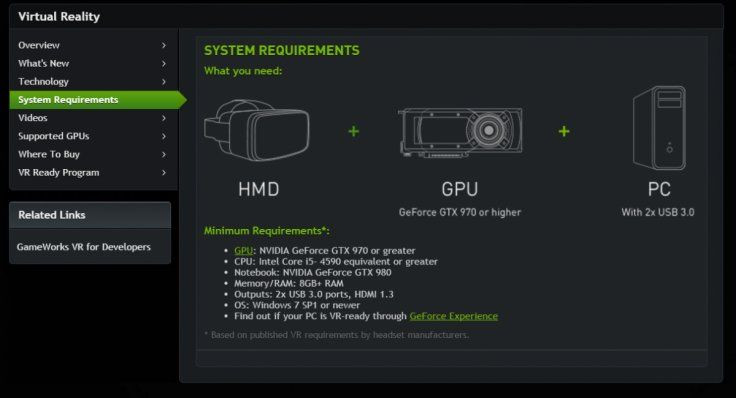We're definitely expecting CES 2016 to kick off with some really exciting new tech and innovations on the virtual reality front, including pioneering devices like the Oculus Rift and HTC Vive. That said, Renowned graphics processing units company Nvidia warns that the time for mainstream virtual reality PC gaming is still a little farther away-- computers today simply aren't powerful enough to run them.
According to Nvidia, there will only be 13 million computers in the world that possesses the power needed to run games on virtual reality graphics.While this may sound like a large number, 13 million accounts for less than 1 percent of the world's 1.43 billion computers, according to estimates from research firm Gartner.
"We see the potential of VR as very large, but we also see a big challenge as far as the computing power that's required. If you look at your typical PC gaming experience, 90% of the gamers out there play at 1080p," said Nvidia's Shield general manager Jason Paul.
"For a smooth experience you don't want to go below 30fps. Compare that to VR where the displays are about 2K, but you have to render closer to 3K, and you don't want to go below 90fps. It's about a sevenfold increase in raw performance to render for VR versus traditional PC gaming. You have to do that in less than 20 milliseconds from head rotation to what shows up on your display."
What does that mean? Anything below 30fps can cause disorienting experience that may cause motion sickness from screen tears and lag.
In order to help consumers identify what constitutes as a "VR ready" PC, Nvidia is slated to launch a new program at CES 2016 that will identify the consumer PC that have the capability and performance to handle the new graphic demands. Facebook recommends Oculus Rift users to have invest in a PC running with an Intel i5 or equivalent processor, 8GB memory, and Nvidia GeForce 970 or AMD Radeon 290 graphics card. Consider the high-end graphics cards alone command $300, nearly the price of a complete current-gen Xbox One or PlayStation 4 console.
As a bit of self-advertisement, Nvidia noted that a "GeForce GTX VR Ready" label will be stamped on the boxes of special PCs that are dedicated to rendering virtual reality graphics for consumer VR headsets like the Oculus Rift. Nvidia also says that virtual reality game developers using Nvidia's own GameWorks VR software enables games to run more efficiently and require less processing power, even potentially raising the number of "VR ready" PCs to 25 million, albiet still a fraction of what's necessary to make virtual reality gaming accessible to the multitude.















![[EG April 19] Best 'Stardew Valley' Mods That Will Change](https://d.player.one/en/full/226012/eg-april-19-best-stardew-valley-mods-that-will-change.png?w=380&h=275&f=955520b8313253ee3c39c791f6210f38)



